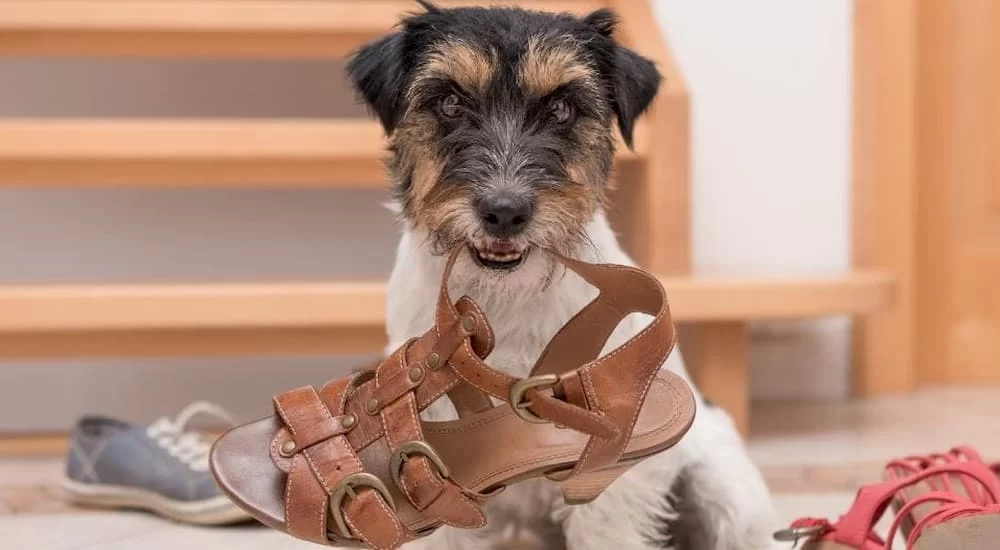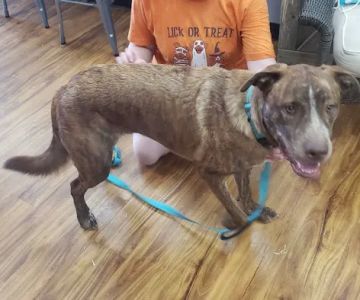- Understanding-Dog-Chewing-Behavior
- Reasons-Dogs-Chew-Furniture
- Step-by-Step-Training-Techniques
- Effective-Prevention-Strategies
- Real-Life-Examples-And-Insights
- Professional-Support-And-Resources
1. Understanding Dog Chewing Behavior
Dogs chewing on furniture can be frustrating, but it’s important to recognize that chewing is a natural behavior. Puppies, in particular, explore their environment through their mouths and often chew to relieve the discomfort of teething. Adult dogs may chew furniture due to boredom, anxiety, or lack of proper outlets for their energy. Understanding why your dog chews is the foundation to addressing the problem effectively.
Chewing can also be a way for dogs to self-soothe when they feel stressed or lonely. Observing the timing and context of when your dog chews can provide valuable clues. For instance, if chewing happens when you leave the house, separation anxiety might be a factor. If it happens during playtime, it could be a sign that your dog needs more physical and mental stimulation.

1946 S Christopher Columbus Blvd, Philadelphia, PA 19148, USA
See Details1.1 The Role of Breed and Age
Some breeds are naturally more prone to chewing due to their energy levels and instincts, such as retrievers and terriers. Puppies go through a phase where chewing is especially intense, and without guidance, this behavior may continue into adulthood. Tailoring your training to your dog’s specific breed and life stage can greatly improve success.
2. Reasons Dogs Chew Furniture
Knowing the underlying causes can help you target your training efforts. Here are some common reasons dogs chew on furniture:
2.1 Teething Discomfort in Puppies
Puppies’ gums hurt when new teeth come in, making chewing one of the few ways to ease the pain. Providing safe chew toys during this phase can redirect their urge away from your furniture.
2.2 Boredom and Lack of Stimulation
Dogs left alone for long periods or without sufficient exercise often turn to destructive behaviors, like chewing furniture, as a way to pass time and release pent-up energy.
2.3 Anxiety and Stress
Separation anxiety or other stressors can prompt compulsive chewing. This behavior can become repetitive and harder to curb if not addressed promptly.
3. Step-by-Step Training Techniques to Stop Furniture Chewing
Training your dog to stop chewing furniture requires patience and consistency. Here is a structured approach that works for many dog owners:
3.1 Provide Appropriate Chew Alternatives
Introduce a variety of chew toys with different textures and tastes to find what your dog prefers. Praise and reward your dog when they choose their toys over furniture, reinforcing positive behavior.
3.2 Use Deterrents Safely
Applying dog-safe bitter sprays to furniture can discourage chewing by making the experience unpleasant. Always ensure the deterrents are non-toxic and test a small area first.
3.3 Supervise and Interrupt
When you catch your dog chewing furniture, calmly interrupt the behavior with a firm “No” or “Leave it,” then redirect them to a toy. Consistency is key; over time, your dog will learn which items are off-limits.
3.4 Increase Exercise and Mental Engagement
More physical activity and mentally stimulating games reduce boredom and anxiety, decreasing the likelihood of destructive chewing. Puzzle feeders, obedience training, and interactive play sessions are effective tools.
4. Effective Prevention Strategies Beyond Training
Beyond direct training, modifying your environment and daily routine can prevent chewing before it starts:
4.1 Manage the Environment
Restrict access to furniture by using baby gates or closing doors when you’re not around to supervise. Crate training can also provide a safe space for your dog when left alone.
4.2 Consistent Routine and Social Interaction
Dogs thrive on predictability and companionship. Regular walks, feeding schedules, and social time help reduce anxiety-driven chewing.
5. Real-Life Examples and Insights
Take the story of Sarah and her Labrador puppy, Max. Max was chewing through the living room chairs within weeks of arrival. By introducing durable chew toys and following a structured training routine, Sarah was able to redirect Max’s chewing to acceptable items. She also found that puzzle toys helped burn off his energy. Over several months, Max’s destructive chewing stopped completely.
This case highlights how patience and understanding a dog’s needs can solve common behavioral problems. For many owners, the journey to stop furniture chewing is as much about strengthening the bond with their dog as it is about protecting their belongings.
6. Professional Support and Resources
If your dog’s chewing behavior is persistent or tied to anxiety, seeking professional guidance is highly recommended. Experienced trainers and veterinarians can assess your dog’s specific needs and recommend tailored solutions.
Hidden Brook Veterinary offers expert advice and products designed to help manage and correct chewing behavior safely. Their knowledgeable team can guide you to the best chew toys, calming aids, and training tools that fit your dog’s personality and lifestyle. Reaching out to such resources can save you time and frustration while ensuring your dog’s well-being.











